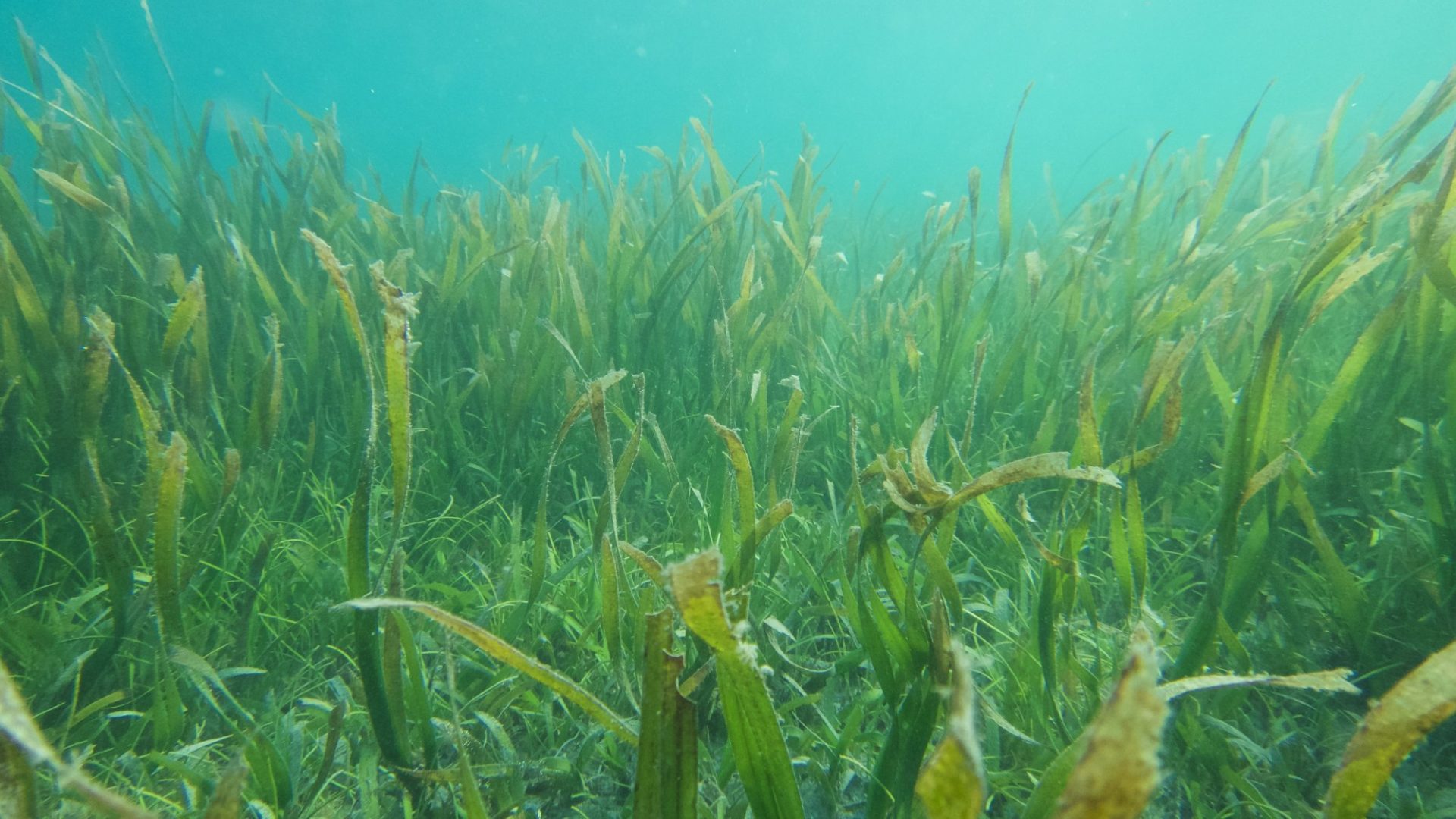Boosting Scotland's Marine Life: The Role Of Seagrass Restoration Bids

Table of Contents
The Ecological Importance of Seagrass in Scotland
Seagrass meadows are far more than just pretty underwater plants; they are bustling biodiversity hotspots and vital components of a healthy marine environment.
Biodiversity Hotspots
Scottish seagrass meadows teem with life, providing essential habitat for a wide array of species. These underwater havens act as nurseries, feeding grounds, and breeding areas for countless creatures.
- Key species: Seahorses, scallops, juvenile cod, various crustaceans, and numerous smaller invertebrate species all depend on seagrass for survival. These meadows offer shelter from predators and provide a rich food source.
- Nursery habitat: Many commercially important fish species, like cod and plaice, rely on seagrass meadows as nurseries during their early life stages. The protection offered by the dense seagrass leaves allows young fish to grow and develop before venturing into open waters.
Carbon Sequestration
Beyond their role as biodiversity hotspots, seagrass meadows are remarkably effective carbon sinks. They capture and store significant amounts of atmospheric carbon dioxide, contributing significantly to climate change mitigation.
- Blue carbon: Seagrass meadows are considered a key component of "blue carbon" ecosystems, meaning they are exceptionally efficient at sequestering carbon from the atmosphere and storing it in their sediments. This process is vital in combating climate change.
- Carbon sequestration potential: Studies estimate that Scottish seagrass meadows have considerable potential for carbon sequestration, making their restoration a crucial climate action strategy. Protecting and restoring these habitats can significantly contribute to Scotland's climate change goals.
Coastal Protection
The dense root systems of seagrass meadows help stabilize sediments, reducing coastal erosion and protecting valuable shorelines. This natural coastal defense mechanism offers significant benefits.
- Benefits for coastal communities: Seagrass meadows act as a natural buffer, protecting coastal communities and infrastructure from the damaging effects of storms and erosion. This protection translates to cost savings on infrastructure repairs and reduced risk to human settlements.
- Erosion prevention: The roots and rhizomes of seagrass bind sediment together, preventing its erosion by wave action and currents. This natural process helps maintain stable coastlines and protects beaches and other coastal features.
The Challenges Facing Seagrass Meadows in Scotland
Despite their ecological importance, Scotland's seagrass meadows face numerous threats, highlighting the urgent need for restoration efforts.
Human Impacts
Human activities are major contributors to the decline of seagrass meadows in Scotland. Pollution, dredging, and destructive fishing practices significantly impact their health and survival.
- Specific examples: Pollution from agricultural runoff, sewage discharge, and industrial pollutants can smother seagrass, reducing light availability and causing die-off. Dredging for navigation channels and destructive fishing practices can directly damage or destroy seagrass beds.
- Consequences: The damage caused by these human activities can lead to loss of habitat, reduced biodiversity, and impaired ecosystem services, undermining the vital role seagrass plays in the marine environment.
Climate Change Impacts
Climate change further exacerbates the threats to Scotland's seagrass meadows. Rising sea temperatures, ocean acidification, and extreme weather events put increased pressure on these vulnerable ecosystems.
- Climate change effects: Rising sea temperatures can lead to increased stress on seagrass, making it more susceptible to disease and reducing its growth rate. Ocean acidification makes it harder for seagrass to build and maintain its skeletal structures.
- Vulnerability: Scottish seagrass meadows are particularly vulnerable to the impacts of climate change, given the predicted changes in sea temperature and ocean acidity in the region. Restoration efforts need to consider these climate-related stressors.
The Role of Seagrass Restoration Bids in Revitalizing Habitats
Securing funding through competitive seagrass restoration bids is critical for implementing effective restoration projects and safeguarding these vital habitats.
Funding Opportunities
Several funding bodies offer grants and support for seagrass restoration projects in Scotland. Successful bids require well-developed proposals and demonstrate a strong understanding of the ecological and societal importance of seagrass.
- Funding organizations: Government agencies like NatureScot, along with environmental trusts and charities, provide funding opportunities for seagrass restoration. European Union funding streams also offer potential sources of support.
- Successful bids: Examples of successful restoration bids include projects focusing on seagrass transplantation, sediment remediation, and community engagement strategies. These projects demonstrate the feasibility and effectiveness of seagrass restoration.
Project Design and Implementation
Successful seagrass restoration bids require careful planning and execution. Rigorous scientific methodology and active community involvement are crucial components.
- Scientific rigor: Successful projects use scientific data to inform project design, ensuring the chosen restoration techniques are appropriate for the specific site conditions. Monitoring and evaluation are critical to measuring success.
- Restoration techniques: Restoration techniques may include seeding, transplanting, or creating favorable conditions for natural regeneration. The choice of technique will depend on the specific location and condition of the seagrass bed.
Monitoring and Evaluation
Post-restoration monitoring is essential to assess project success and inform future initiatives. Collecting data on seagrass growth, biodiversity, and carbon sequestration allows for adaptive management and improved future bids.
- Key metrics: Key metrics for evaluating seagrass restoration efforts include seagrass cover, shoot density, species richness, and carbon sequestration rates. Regular monitoring ensures that restoration efforts are effective.
- Improving future projects: Data collected through monitoring informs adaptive management strategies, leading to more efficient and successful restoration projects in the future. This feedback loop is essential for refining restoration techniques and improving the success rate of future bids.
Conclusion
Seagrass restoration bids are essential for protecting and restoring Scotland's vital seagrass meadows. These underwater ecosystems provide invaluable ecosystem services, supporting biodiversity, mitigating climate change, and protecting coastlines. Successful bids require robust scientific planning, community engagement, and effective monitoring. By supporting and participating in these vital projects, we can help secure the future of Scotland's precious marine life and contribute to a healthier ocean. Learn more about how you can support seagrass restoration efforts in Scotland. Explore available funding opportunities and consider contributing to seagrass restoration bids to help secure the future of Scotland's precious marine life and contribute to a healthier ocean. Get involved in seagrass conservation today!

Featured Posts
-
 Blake Lively And Anna Kendrick Squash Feud Rumors With Premiere Reunion
May 04, 2025
Blake Lively And Anna Kendrick Squash Feud Rumors With Premiere Reunion
May 04, 2025 -
 Combats Ufc Des Moines La Participation De Robertson Et Sidey Confirmee
May 04, 2025
Combats Ufc Des Moines La Participation De Robertson Et Sidey Confirmee
May 04, 2025 -
 Mma Predictions Top Picks And Odds For Ufc Des Moines
May 04, 2025
Mma Predictions Top Picks And Odds For Ufc Des Moines
May 04, 2025 -
 Turki Al Sheikhs Miscalculation 40 50 Million Viewers Lost In Canelo Paul Fight
May 04, 2025
Turki Al Sheikhs Miscalculation 40 50 Million Viewers Lost In Canelo Paul Fight
May 04, 2025 -
 Direct To Consumer Streaming Fox Names Peter Distad As Head
May 04, 2025
Direct To Consumer Streaming Fox Names Peter Distad As Head
May 04, 2025
